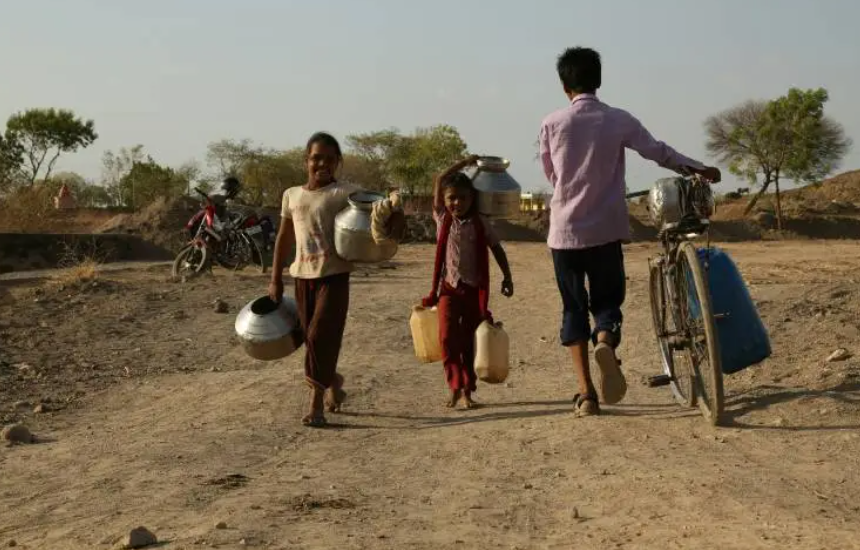Water Scarcity Threatens India’s Economic Growth (GS Paper 3, Environment)

Introduction
- India's persistent water crises and increased vulnerability to climate change pose significant risks to its sovereign credit strength, as highlighted by Moody’s Investors Service.
- This warning comes at a crucial time when India is poised to become the world's third-largest economy.
- The rare use of this non-economic metric underscores the immediate difficulties faced by millions in various cities and towns, exacerbated by a particularly harsh summer.
How Water Scarcity Can Damage Economic Growth
- With meteorologists predicting more intense heat waves in the coming years, water security is critical to India’s economic ambitions.
- Moody's emphasizes that any reduction in water supply could disrupt agricultural and industrial operations, leading to higher food prices and a decline in real incomes.
- The agency identifies coal-fired power generation and steel production as the industrial sectors most vulnerable to water stress, highlighting the potential for widespread economic disruption.
The Status of Water Availability in India
- Government estimates indicate that per capita water availability in India is likely to fall from an already low 1,486 cubic meters to less than 1,400 cubic meters by 2030.
- This figure is well below the Ministry of Water Resources’ benchmark of 1,700 cubic meters, signaling an urgent need for effective water management strategies.
Water Conservation and Harvesting: An On-Paper Exercise
- India’s historical approach to water-related deficits has focused on supply-side solutions, leading to the uneconomical use of water resources, particularly the overutilization of groundwater.
- Current water pricing mechanisms fail to reflect the critical state of the country’s aquifers.
- Despite the launch of initiatives like the Jal Shakti Abhiyan for rainwater harvesting and water conservation, implementation has been largely ineffective.
- Major cities such as Delhi, Bengaluru, and Mumbai have laws requiring rainwater harvesting, but enforcement is lacking, and there is no comprehensive data on compliance.
- State governments and municipal corporations have done little to incentivize or penalize water conservation efforts in the construction sector.
The Gloomy Picture Ahead
- Over the next 20 years, India is expected to add more than 270 million people to its urban population, intensifying competition for water between businesses and households. Discussions on water audits in industries are still in their infancy.
- Moody’s report could spark necessary conversations and actions.
- For example, the International Energy Agency notes that 70% of India’s projected electricity generation for 2040 will come from plants not yet commissioned, indicating a significant opportunity to implement technologies like dry cooling and non-fresh water cooling to reduce water resource pressure.
Conclusion
- The consideration of non-financial metrics, such as water scarcity, in determining the credit rating of an economy is a relatively new approach.
- As the effects of climate change become more pronounced, these factors will increasingly influence growth prospects globally.
- Moody’s warning should prompt policymakers to develop innovative and sustainable water use strategies, ensuring long-term economic stability and resilience.


